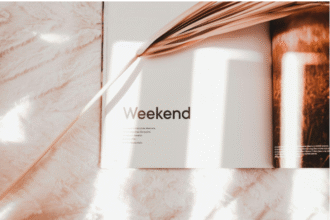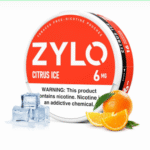The peacoat’s story starts chilly—out on the sea, swaddling naval men since the 18th century. “Pea” refers not to the veggie, but to “pije,” a Dutch term for coarse wool fabric. British and later American sailors needed warmth, toughness, and freedom of movement—hence the peacoat’s beefy wool, double-breasted front, broad lapels, and those anchor-embossed buttons. Protective, functional, and darn good-looking: that’s the classic men’s peacoat.
How to Spot a Primo Peacoat, In Short
Fabric—Look for 100% heavy melton wool (think rich, dense, and wind-thwarting). If it’s got a bit of cashmere, even better—but pure wool is the classic standard.
Construction—You want that “substantial” shoulder feel—that slight armor-like heft. Double-breasted with wide lapels and a nicely nipped waist.
Details—Count those buttons (six or eight, often with maritime motifs). A real peacoat has vertical or slightly slanted slash pockets, a deep collar you can really pop, and a proper reinforced interior.
Fit—Room to layer, but never baggy. The body should hug (not strangle) and the sleeves cut to just below the wrist bone.
Finishings—Check inside for neat tailoring, lined sleeves, and stitching that looks, well, intentional. A proper peacoat feels reassuringly solid.
Materials That Make a Difference in Peacoat Quality
Virgin Wool vs. Wool Blends
Virgin Wool
This is wool that’s spun straight from the sheep to the mill, never recycled or processed before. Think of it as the “first pressing” in olive oil—pure, springy, and resilient. It’s got that slight natural lanolin sheen, and when you squeeze it, it bounces back.
Blended Wool
Usually mixed with synthetics (polyester, nylon) or other fibers (sometimes even cashmere, for “luxury” blends). While blends can add stretch, reduce price, or feel softer, they usually cut corners on warmth, weather resistance, and longevity. If you crumple a “blended” peacoat in your fist, it may not spring back or might feel a tad limp.
Look for labels—“100% Virgin Wool” is your sign of uncompromised quality. If you see “wool blend” or long lists of fiber contents, proceed with caution.
Melton Wool vs. Virgin Wool
Think of melton as the beefcake version of wool—hard-wearing, thick, and dense. “Melton” isn’t a sheep breed, it’s a finish: tightly woven virgin wool that’s then fulled and sheared to lock in the fibers, resulting in a smooth surface that shrugs off wind and weather.
Melton wool is practically peacoat DNA! It’s classic—what navies have trusted for centuries. It’s heavier, super-warm, and has a clean look that refuses to pill (the little bobbles cheap coats get after wear).
Plain Virgin Wool (non-melton) could be softer and lighter, but isn’t as bulletproof. Fine for more delicate uses, but won’t take a beating like melton.
Professional Verdict: For a true navy-inspired peacoat, melton virgin wool is your gold standard—a tough, thick, pressed-together blanket of warmth and weather-fighting style.
On Cashmere Blends: The Siren Song of Softness
Cashmere is the sports car of the wool world: smooth, posh, and head-turning—but you don’t want to take it off-roading. For sure, the cashmere in your peacoat lining feels heavenly. But in a main cloth? It means less muscle, more pampering needed, and… rain is basically its kryptonite.
A smidge of cashmere (5-10%) in a melton blend can add a touch of luxury without giving up all the toughness—but steer clear if you’re after longevity and don’t want to baby your coat. On the other hand, if you want a peacoat that walks the line between dashing and durable—a real companion for your business (and pleasure) adventures—you’ve got to get handsy with the cloth!
Men’s peacoats aren’t meant to live delicate lives. You want to throw it on the back of your chair, dash through the sleet, hop into taxis, and still look bold at the bar. Virgin melton wool is the wingman you want—cashmere, meanwhile, prefers cocktails in the VIP lounge.
Quick Guide on Shopping
- Feel the heft—quality melton will have satisfying weight; it shouldn’t flap paper-thin in the wind.
- Rub your thumb over it—should feel smooth, almost like a densely packed felt, not loose or scratchy.
- Ask the shopkeeper—“Is this 100% melton wool?” and watch for hedging.
Rain or boardroom, order your peacoat in 100% melton-finished virgin wool. It’ll age with grace, handle your schedule, and always look the part—no velvet ropes or fussing required. That’s the kind of loyal friend we all need hanging in our closet.
Signs of a High-Quality Peacoat You Can Trust
Details Make the Difference
Back in the day, sailors used the wide lapels of a peacoat to block wind, and the top button was meant to fasten it all the way up—like a built-in scarf for North Sea gusts. So, sfter fabric, check the following:
- Stitching—Flip the collar, sneak a peek at the seams (inside and out). Tight, even stitches = lasting strength. If you spot stray threads or sloppy lines, walk away.
- Lining—Fully lined body and sleeves aren’t just for looks—they protect the wool and help the coat slide on smoothly. A quality lining (usually viscose or cupro; avoid cheap polyester) will be smooth, with no bagginess.
- Pockets—Well-set, reinforced, and deep enough to warm your hands. Bonus points for stitching that adds style but isn’t just decoration.
- Buttons—They should be solid, sewn on tight, and ideally made of horn or tough resin. (Pro tip: Anchor motifs are classic, but beware of sharp edges—they catch on threads!)
- Shoulder “roll” and fit—The coat should lie flat across your shoulders like a gentle embrace, not a straightjacket. A little shape, a little drape, not boxy.
Made In… Where?
Country of origin can be a marker of tradition—but don’t get hung up on “domestic” vs. “imported” outright. Look for transparency: a good brand will proudly tell you where and how your coat was made—not just slap on a label.
- Classics—Britain (especially around London), Italy, and the U.S. (notably New York and Boston makers) have a deep-rooted peacoat legacy. France, too, for a chic twist.
- What matters most—Knowledge, standards, and pride in craft. Some small U.S. and U.K. workshops make killer coats; some “heritage” brands are a little too reliant on nostalgia.
- Modern Moves—These days, some of the best value comes from Portugal, Spain, and even Eastern Europe, where old-school skills meet sensible prices.
Looking for a fancy logo? That’s cool—but know it might cost you extra just for the privilege.
- Luxury brands
Think Burberry, Saint Laurent, or Gieves & Hawkes. You’ll get great quality and style, but also pay for prestige.
- Modern classics
Look for labels like Schott (NYC firepower), Private White V.C. (Manchester magic), or even classic navy surplus for authenticity without the hype.
Sometimes, an independent tailor or small workshop will beat out the big boys. If the fabric and build are right, don’t be afraid to go off the beaten path—even if the name isn’t a household staple. And often a no-logo peacoat is the statement. It’s like a perfectly played jazz riff: authentic, effortless, and impossible to fake. So, why pay the extra?!
Great marketing only gets you noticed. Great craftsmanship gets you a coat you’ll love for a decade, and maybe hand down one day. Don’t pay only for a name—but don’t knock a good brand if they back it up with legendary quality.
May your search for the perfect peacoat be as much a joy as a necessity, and may you wear it with the easy confidence of a man who’s got nothing to prove, but plenty to show!

















